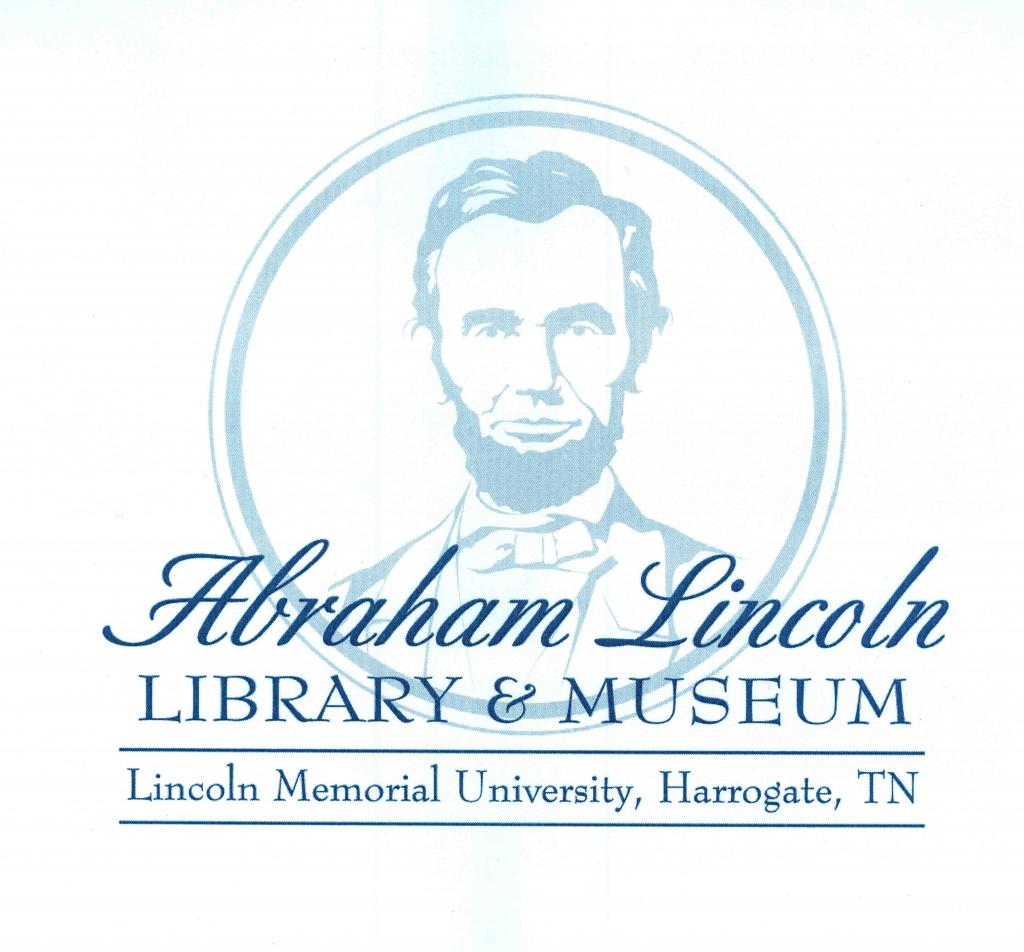from
Framed Mourning Badge
-
Full Title
Copper Framed Photograph Badge with Ribbon
-
Description
This small, framed photograph of Abraham Lincoln may have been worn by supporters during presidential campaigns and mourning during the President’s funeral procession. The funeral procession began in Washington, DC, on April 20, 1865. The train carrying Lincoln’s body stopped in Baltimore, MD, and Harrisburg, PA, before arriving in Philadelphia on April 22. The body lay in state at Independence Hall and was open for public viewing on April 23. The funeral train departed from Philadelphia for New York City at 4:00 a.m. on April 24.
-
Source
The Abraham Lincoln Foundation of The Union League of Philadelphia (Object ID: 1972.200.2)
-
Rights
Use of this item for research, teaching and private study is permitted with proper citation and attribution, as “Courtesy of The Abraham Lincoln Foundation of The Union League of Philadelphia.” Reproduction of this item for publication, broadcast or commercial use requires written permission. For permission, please contact The Abraham Lincoln Foundation.
-
Tags
-
Cite this Item
Unknown. "Copper Framed Photograph Badge with Ribbon". Remembering Lincoln. Web. Accessed December 14, 2025. https://rememberinglincoln.fords.org/node/895
from
Copper Framed Photograph Badge with Ribbon
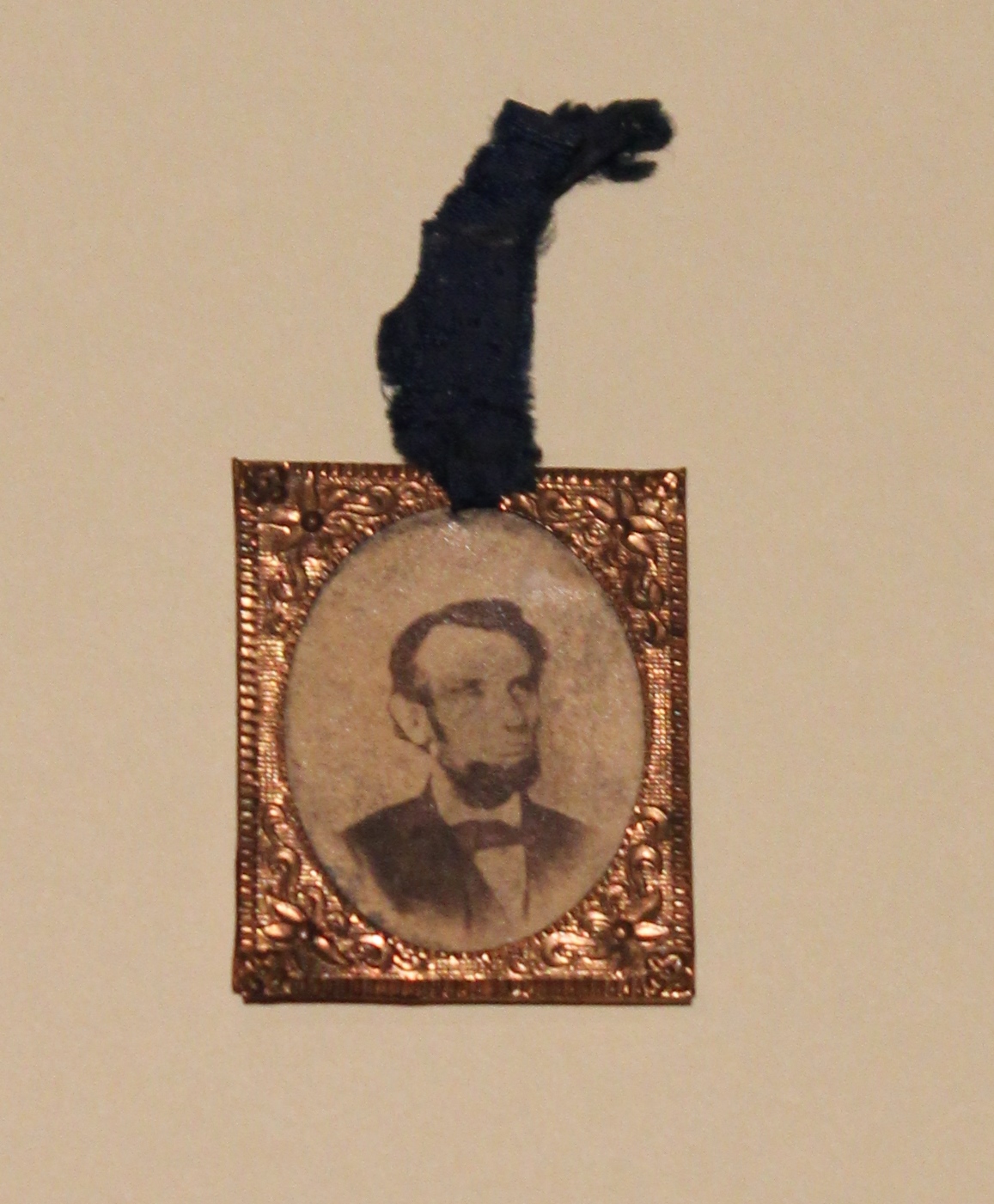
-
Description
This small, framed photograph of Abraham Lincoln may have been worn by supporters during presidential campaigns and mourning during the President’s funeral procession. The funeral procession began in Washington, DC, on April 20, 1865. The train carrying Lincoln’s body stopped in Baltimore, MD, and Harrisburg, PA, before arriving in Philadelphia on April 22. The body lay in state at Independence Hall and was open for public viewing on April 23. The funeral train departed from Philadelphia for New York City at 4:00 a.m. on April 24.
-
Source
The Abraham Lincoln Foundation of The Union League of Philadelphia (Object ID: 1972.200.2)
-
Rights
Use of this item for research, teaching and private study is permitted with proper citation and attribution, as “Courtesy of The Abraham Lincoln Foundation of The Union League of Philadelphia.” Reproduction of this item for publication, broadcast or commercial use requires written permission. For permission, please contact The Abraham Lincoln Foundation.
-
Creator
Unknown
-
Material
Copper, silk, paper
-
Dimensions
2.25 x 1.0
from
Mrs. Lincoln's Dress Fragment
-
Full Title
Fragment of Mrs. Lincoln's Funeral Dress
-
Description
This is presumably a fragment of Mrs. Mary Todd Lincoln's dress worn during the President's funeral procession in April 1865. There is no provenance record to document how this object came to the Union League. The object was labeled as a fragment of Mrs. Lincoln's mourning dress.
-
Source
The Abraham Lincoln Foundation of The Union League of Philadelphia (Object ID: 2001.35.1)
-
Rights
Use of this item for research, teaching and private study is permitted with proper citation and attribution, as “Courtesy of The Abraham Lincoln Foundation of The Union League of Philadelphia.” Reproduction of this item for publication, broadcast or commercial use requires written permission. For permission, please contact The Abraham Lincoln Foundation.
-
Tags
-
Cite this Item
Unknown. "Fragment of Mrs. Lincoln's Funeral Dress ". Remembering Lincoln. Web. Accessed December 14, 2025. https://rememberinglincoln.fords.org/node/894
from
Fragment of Mrs. Lincoln's Funeral Dress
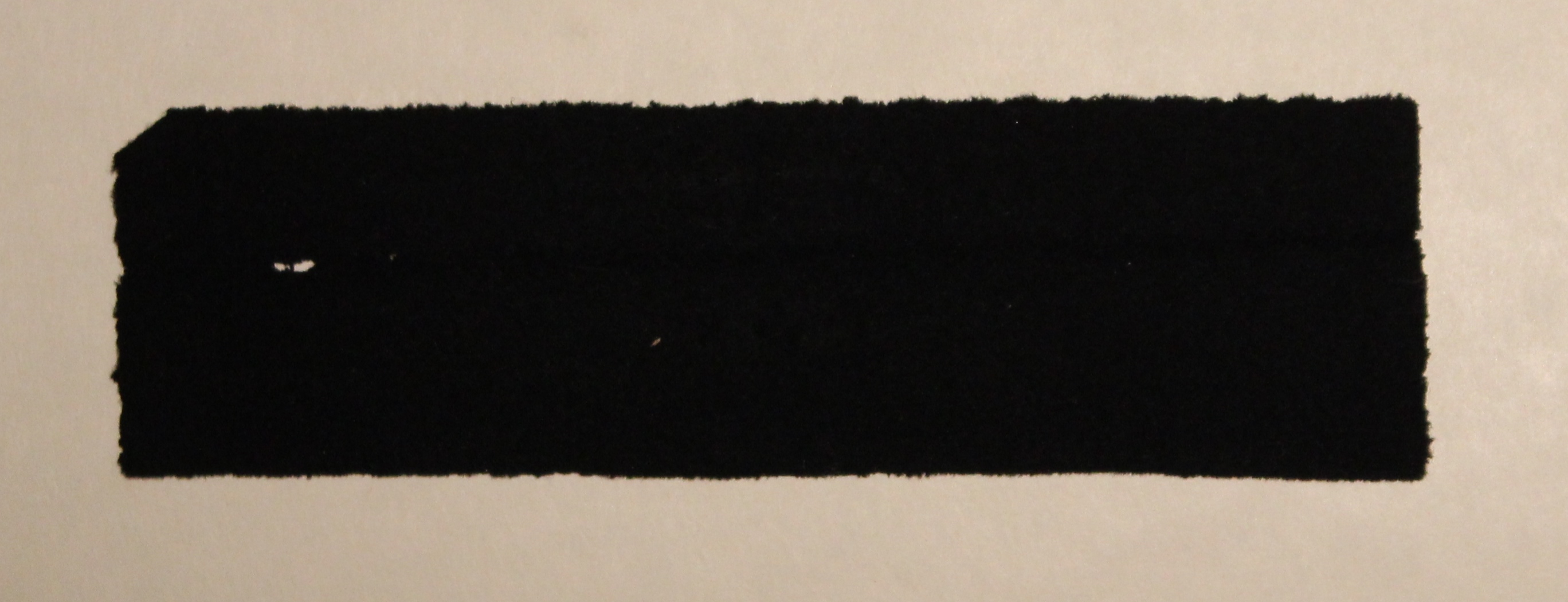
-
Description
This is presumably a fragment of Mrs. Mary Todd Lincoln's dress worn during the President's funeral procession in April 1865. There is no provenance record to document how this object came to the Union League. The object was labeled as a fragment of Mrs. Lincoln's mourning dress.
-
Source
The Abraham Lincoln Foundation of The Union League of Philadelphia (Object ID: 2001.35.1)
-
Rights
Use of this item for research, teaching and private study is permitted with proper citation and attribution, as “Courtesy of The Abraham Lincoln Foundation of The Union League of Philadelphia.” Reproduction of this item for publication, broadcast or commercial use requires written permission. For permission, please contact The Abraham Lincoln Foundation.
-
Creator
Unknown
-
Material
Wool
-
Dimensions
2.0 x 6.5
from
Mourning Ribbon with Shield
-
Full Title
Mourning Ribbon with Shield and Photographic Portrait of Lincoln
-
Description
This mourning ribbon includes an embroidered shield along with a framed photograph of President Lincoln. The ribbon was worn by mourners who visited President Lincoln’s funeral in Philadelphia, Pennsylvania. Lincoln’s funeral procession began in Washington, DC, on April 20, 1865. The train carrying Lincoln’s body stopped in Baltimore, MD, and Harrisburg, PA, before arriving in Philadelphia on April 22. The body lay in state at Independence Hall and was open for public viewing on April 23. The funeral train departed from Philadelphia for New York City at 4:00 a.m. on April 24.
-
Source
The Abraham Lincoln Foundation of The Union Leage of Philadelphia (Object ID: 2001.238.3)
-
Rights
Use of this item for research, teaching and private study is permitted with proper citation and attribution, as “Courtesy of The Abraham Lincoln Foundation of The Union League of Philadelphia.” Reproduction of this item for publication, broadcast or commercial use requires written permission. For permission, please contact The>The Abraham Lincoln Foundation.
-
Tags
-
Cite this Item
Unknown. "Mourning Ribbon with Shield and Photographic Portrait of Lincoln". Remembering Lincoln. Web. Accessed December 14, 2025. https://rememberinglincoln.fords.org/node/893
from
Mourning Ribbon with Shield and Photographic Portrait of Lincoln

-
Description
This mourning ribbon includes an embroidered shield along with a framed photograph of President Lincoln. The ribbon was worn by mourners who visited President Lincoln’s funeral in Philadelphia, Pennsylvania. Lincoln’s funeral procession began in Washington, DC, on April 20, 1865. The train carrying Lincoln’s body stopped in Baltimore, MD, and Harrisburg, PA, before arriving in Philadelphia on April 22. The body lay in state at Independence Hall and was open for public viewing on April 23. The funeral train departed from Philadelphia for New York City at 4:00 a.m. on April 24.
-
Source
The Abraham Lincoln Foundation of The Union Leage of Philadelphia (Object ID: 2001.238.3)
-
Rights
Use of this item for research, teaching and private study is permitted with proper citation and attribution, as “Courtesy of The Abraham Lincoln Foundation of The Union League of Philadelphia.” Reproduction of this item for publication, broadcast or commercial use requires written permission. For permission, please contact The>The Abraham Lincoln Foundation.
-
Creator
Unknown
-
Material
Silk, copper, paper
-
Dimensions
4.25 x 0.75
from Apr. 15, 1865
Tanner Manuscript
-
Full Title
The James Tanner Manuscript
-
Description
In 1865 Corporal James Tanner was a disabled Civil War veteran working as a clerk in the Ordnance Bureau of the War Department and living in an apartment next to the Petersen House in Washington, D.C. On April 14th, President Abraham Lincoln was shot during a theatre performance at Ford’s Theatre. The mortally wounded President was taken to the Petersen House. Because he had stenography skills, Tanner was called into the Petersen House. While Lincoln lay dying in the bedroom, Tanner sat in the parlor and recorded eyewitness testimony as given to Secretary of War Edwin Stanton and David Kellogg Cartter, Chief Justice of the Supreme Court of the District of Columbia. The interrogation of the witnesses took place between midnight and 1:30 A.M. "In fifteen minutes I had testimony enough to hang Wilkes Booth, the assassin, higher than ever Haman hung" noted Tanner. While still in the parlor, Tanner transcribed his shorthand notes into longhand, finishing his task at 6:45 A.M. Tanner returned to his apartment and, dissatisfied with the quality of the first transcription, began a second copy which he left with an aide of Stanton's at his office in the War Department. Tanner retained the original testimony. The copy deposited at the War Department was lost. In 1905, Tanner’s son took his father’s first transcription and mounted each sheet on linen and bound them. In November 1917, as the Union League prepared to celebrate its 55th anniversary and dedicate the Lincoln Memorial Room, Corporal James Tanner wrote to UL President John Gribbell to offer his bound volume of testimony to the League’s collection: "believing that they are of considerable interest to the general public owing to the circumstances surrounding their creation and believing they will become more so as the years pass, I write to say that if you care to give the volume a place among the treasures you may now possess or may naturally gather in the future regarding President Lincoln, I shall be glad to present them to you in perpetuity, limited only to the life of the Union League." Digitization courtesy of the Schoenberg Center for Electronic Text and Image, University of Pennsylvania Libraries.
-
Transcription
Scroll down to "Related Resources" for a downloadable transcription with page breaks that match the original manuscript.
-
Source
The Abraham Lincoln Foundation of The Union League of Philadelphia (Object ID: XI.2.1917.2)
-
Rights
Use of this item for research, teaching and private study is permitted with proper citation and attribution, as “Courtesy of The Abraham Lincoln Foundation of The Union League of Philadelphia.” Reproduction of this item for publication, broadcast or commercial use requires written permission. For permission, please contact The Abraham Lincoln Foundation.
-
Tags
-
Cite this Item
James Tanner. "The James Tanner Manuscript". Remembering Lincoln. Web. Accessed December 14, 2025. https://rememberinglincoln.fords.org/node/892
from Apr. 15, 1865
The James Tanner Manuscript
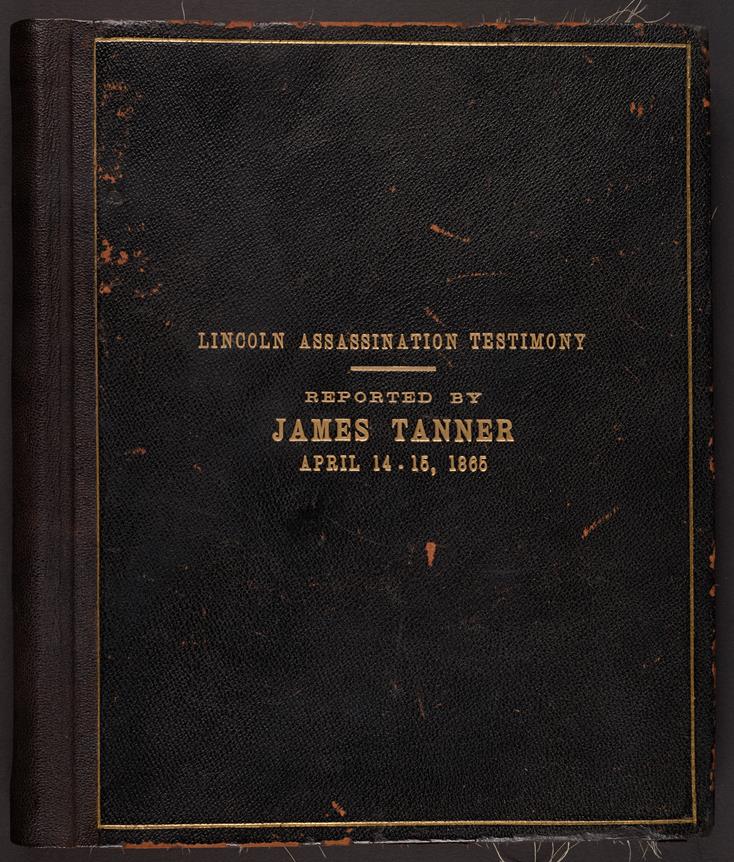
-
Description
In 1865 Corporal James Tanner was a disabled Civil War veteran working as a clerk in the Ordnance Bureau of the War Department and living in an apartment next to the Petersen House in Washington, D.C. On April 14th, President Abraham Lincoln was shot during a theatre performance at Ford’s Theatre. The mortally wounded President was taken to the Petersen House. Because he had stenography skills, Tanner was called into the Petersen House. While Lincoln lay dying in the bedroom, Tanner sat in the parlor and recorded eyewitness testimony as given to Secretary of War Edwin Stanton and David Kellogg Cartter, Chief Justice of the Supreme Court of the District of Columbia. The interrogation of the witnesses took place between midnight and 1:30 A.M. "In fifteen minutes I had testimony enough to hang Wilkes Booth, the assassin, higher than ever Haman hung" noted Tanner. While still in the parlor, Tanner transcribed his shorthand notes into longhand, finishing his task at 6:45 A.M. Tanner returned to his apartment and, dissatisfied with the quality of the first transcription, began a second copy which he left with an aide of Stanton's at his office in the War Department. Tanner retained the original testimony. The copy deposited at the War Department was lost. In 1905, Tanner’s son took his father’s first transcription and mounted each sheet on linen and bound them. In November 1917, as the Union League prepared to celebrate its 55th anniversary and dedicate the Lincoln Memorial Room, Corporal James Tanner wrote to UL President John Gribbell to offer his bound volume of testimony to the League’s collection: "believing that they are of considerable interest to the general public owing to the circumstances surrounding their creation and believing they will become more so as the years pass, I write to say that if you care to give the volume a place among the treasures you may now possess or may naturally gather in the future regarding President Lincoln, I shall be glad to present them to you in perpetuity, limited only to the life of the Union League." Digitization courtesy of the Schoenberg Center for Electronic Text and Image, University of Pennsylvania Libraries.
-
Source
The Abraham Lincoln Foundation of The Union League of Philadelphia (Object ID: XI.2.1917.2)
-
Rights
Use of this item for research, teaching and private study is permitted with proper citation and attribution, as “Courtesy of The Abraham Lincoln Foundation of The Union League of Philadelphia.” Reproduction of this item for publication, broadcast or commercial use requires written permission. For permission, please contact The Abraham Lincoln Foundation.
-
Creator
James Tanner
-
Date
April 15, 1865
-
Material
Paper, board, cloth
-
Dimensions
11" H x 9.5" W
from
Philadelphia Police Ribbon
-
Full Title
Philadelphia Police Mourning Ribbon
-
Description
This mourning badge was worn by Mr. Godfrey Stringer when President Lincoln’s body lay in state in Philadelphia, PA. Lincoln’s body was brought to Philadelphia on April 22, 1865. The object includes a cardboard police badge covered in black gauze and black silk ribbon. Below the black cinched ribbon, there is a white silk ribbon that reads, “We Mourn Our Nation’s Loss. Born February 12th, 1809, Died April 17th 1865.” Notice the incorrect date listed for the President's death.
-
Transcription
We Mourn Our Nation’s Loss.
Born February 12th, 1809
Died April 17th 1865. -
Source
The Abraham Lincoln Foundation of The Union League of Philadelphia (Object ID: 2001.240.1)
-
Rights
Use of this item for research, teaching and private study is permitted with proper citation and attribution, as “Courtesy of The Abraham Lincoln Foundation of The Union League of Philadelphia.” Reproduction of this item for publication, broadcast or commercial use requires written permission. For permission, please contact The Abraham Lincoln Foundation.
-
Tags
-
Cite this Item
Unknown. "Philadelphia Police Mourning Ribbon". Remembering Lincoln. Web. Accessed December 14, 2025. https://rememberinglincoln.fords.org/node/891
from
Philadelphia Police Mourning Ribbon

-
Description
This mourning badge was worn by Mr. Godfrey Stringer when President Lincoln’s body lay in state in Philadelphia, PA. Lincoln’s body was brought to Philadelphia on April 22, 1865. The object includes a cardboard police badge covered in black gauze and black silk ribbon. Below the black cinched ribbon, there is a white silk ribbon that reads, “We Mourn Our Nation’s Loss. Born February 12th, 1809, Died April 17th 1865.” Notice the incorrect date listed for the President's death.
-
Source
The Abraham Lincoln Foundation of The Union League of Philadelphia (Object ID: 2001.240.1)
-
Rights
Use of this item for research, teaching and private study is permitted with proper citation and attribution, as “Courtesy of The Abraham Lincoln Foundation of The Union League of Philadelphia.” Reproduction of this item for publication, broadcast or commercial use requires written permission. For permission, please contact The Abraham Lincoln Foundation.
-
Creator
Unknown
-
Material
Cardboard, gauze, silk, paper
-
Dimensions
9.25 x 3.75
from May. 1, 1865
Lincoln Drape Glass
-
Full Title
Lincoln Drape Glass
-
Description
One of a series of seven pressed glass dishes with a Lincoln Drape design. The rims feature an alternating semi-circle and stud design; the medallion present on related pieces is not present here, but the familiar drape and vertical groove scheme from other Lincoln Drape pieces is present. A star or flower design appears on the bottom.
According to Ruth Webb Lee's study of pressed glass, Lincoln Drape sauce dishes shared the dimensions of these dishes, so they can comfortably be identified as sauce dishes. This is part of a series of Lincoln Drape pressed glass pieces, probably manufactured by the Boston and Sandwich Glass Company of Massachusetts or McKee & Bros. of Pittsburgh, PA. The design supposedly represents the black crepe that adorned Lincoln's casket and hearse, but this cannot be proven. -
Rights
Use of this item for research, teaching and private study is permitted with proper citation and attribution, as defined here. Reproduction of this item for publication, broadcast or commercial use requires written permission. For permission, please contact the Abraham Lincoln Library and Museum of Lincoln Memorial University, Harrogate, TN.
-
Tags
-
Cite this Item
Multiple manufacturers. "Lincoln Drape Glass". Remembering Lincoln. Web. Accessed December 14, 2025. https://rememberinglincoln.fords.org/node/890
from May. 1, 1865
Lincoln Drape Glass
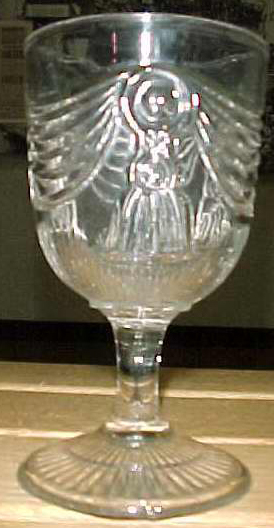
-
Description
One of a series of seven pressed glass dishes with a Lincoln Drape design. The rims feature an alternating semi-circle and stud design; the medallion present on related pieces is not present here, but the familiar drape and vertical groove scheme from other Lincoln Drape pieces is present. A star or flower design appears on the bottom.
According to Ruth Webb Lee's study of pressed glass, Lincoln Drape sauce dishes shared the dimensions of these dishes, so they can comfortably be identified as sauce dishes. This is part of a series of Lincoln Drape pressed glass pieces, probably manufactured by the Boston and Sandwich Glass Company of Massachusetts or McKee & Bros. of Pittsburgh, PA. The design supposedly represents the black crepe that adorned Lincoln's casket and hearse, but this cannot be proven. -
Rights
Use of this item for research, teaching and private study is permitted with proper citation and attribution, as defined here. Reproduction of this item for publication, broadcast or commercial use requires written permission. For permission, please contact the Abraham Lincoln Library and Museum of Lincoln Memorial University, Harrogate, TN.
-
Creator
Multiple manufacturers
-
Date
May 1, 1865
-
Material
glass
Commemorating Lincoln
from May. 1, 1865
National day of fasting and prayer
-
Full Title
National day of fasting and prayer
-
Description
President Andrew Johnson declared June 1, 1865, to be a “national day of fasting and prayer.” People all over the country collected mourning cards like this one as a way to take part in the observances.
-
Source
-
Rights
This item is in the public domain and may be reproduced and used for any purpose, including research, teaching, private study, publication, broadcast or commercial use, with proper citation and attribution.
-
Tags
-
Cite this Item
unknown. "National day of fasting and prayer". Remembering Lincoln. Web. Accessed December 14, 2025. https://rememberinglincoln.fords.org/node/888
-
Creator
unknown
-
Date
1865
from May. 1, 1865
National day of fasting and prayer
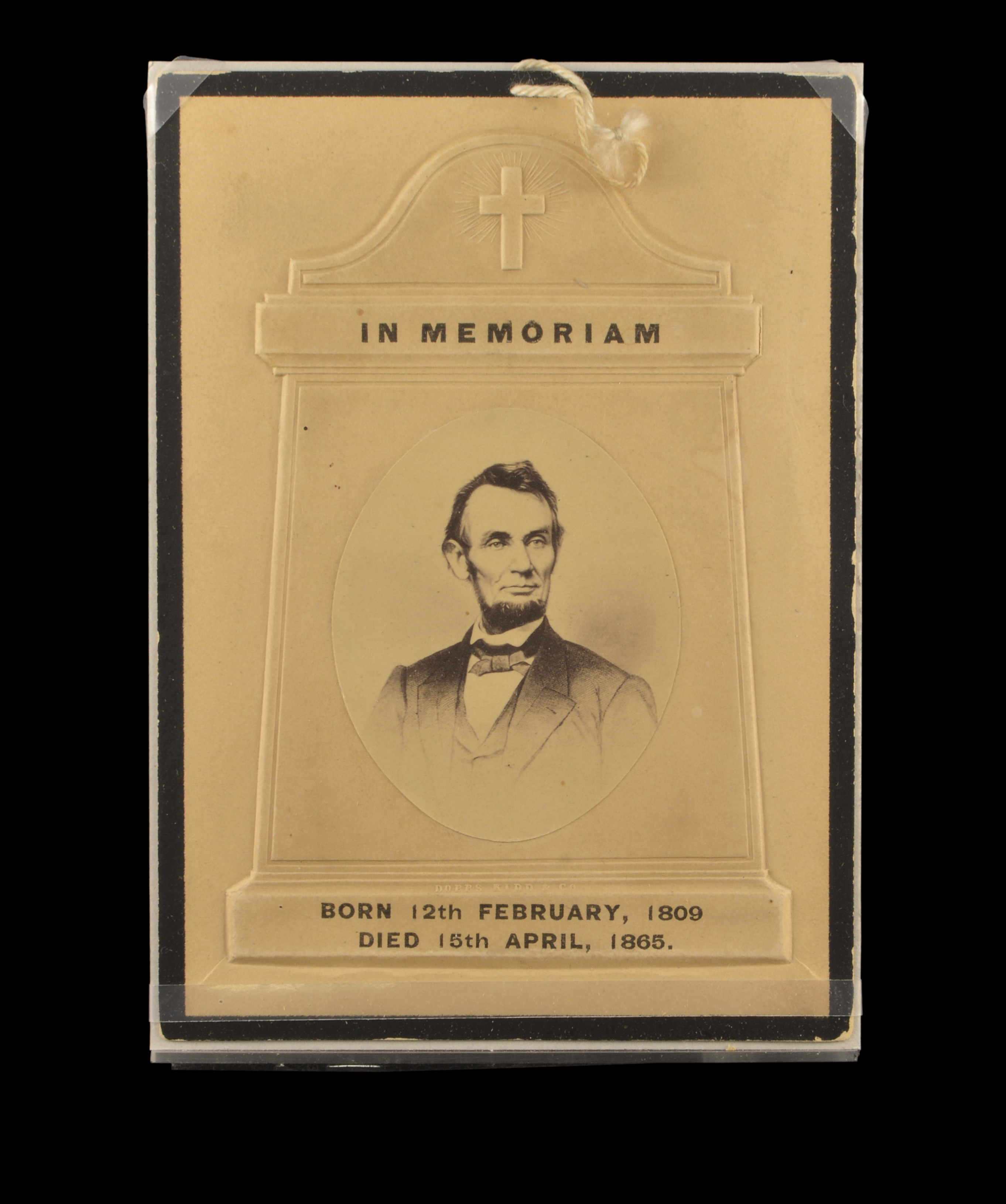
-
Description
President Andrew Johnson declared June 1, 1865, to be a “national day of fasting and prayer.” People all over the country collected mourning cards like this one as a way to take part in the observances.
-
Source
-
Rights
This item is in the public domain and may be reproduced and used for any purpose, including research, teaching, private study, publication, broadcast or commercial use, with proper citation and attribution.
-
Creator
unknown
-
Date
May 1, 1865
from May. 1, 1865
Mourning Card in memoriam
-
Full Title
Mourning Card in memoriam
-
Description
President Andrew Johnson declared June 1, 1865, to be a “national day of fasting and prayer.” People all over the country collected mourning cards like this one as a way to take part in the observances.
-
Source
-
Rights
This item is in the public domain and may be reproduced and used for any purpose, including research, teaching, private study, publication, broadcast or commercial use, with proper citation and attribution.
-
Cite this Item
unknown. "Mourning Card in memoriam". Remembering Lincoln. Web. Accessed December 14, 2025. https://rememberinglincoln.fords.org/node/887
-
Creator
unknown
-
Date
1865
from May. 1, 1865
Mourning Card in memoriam
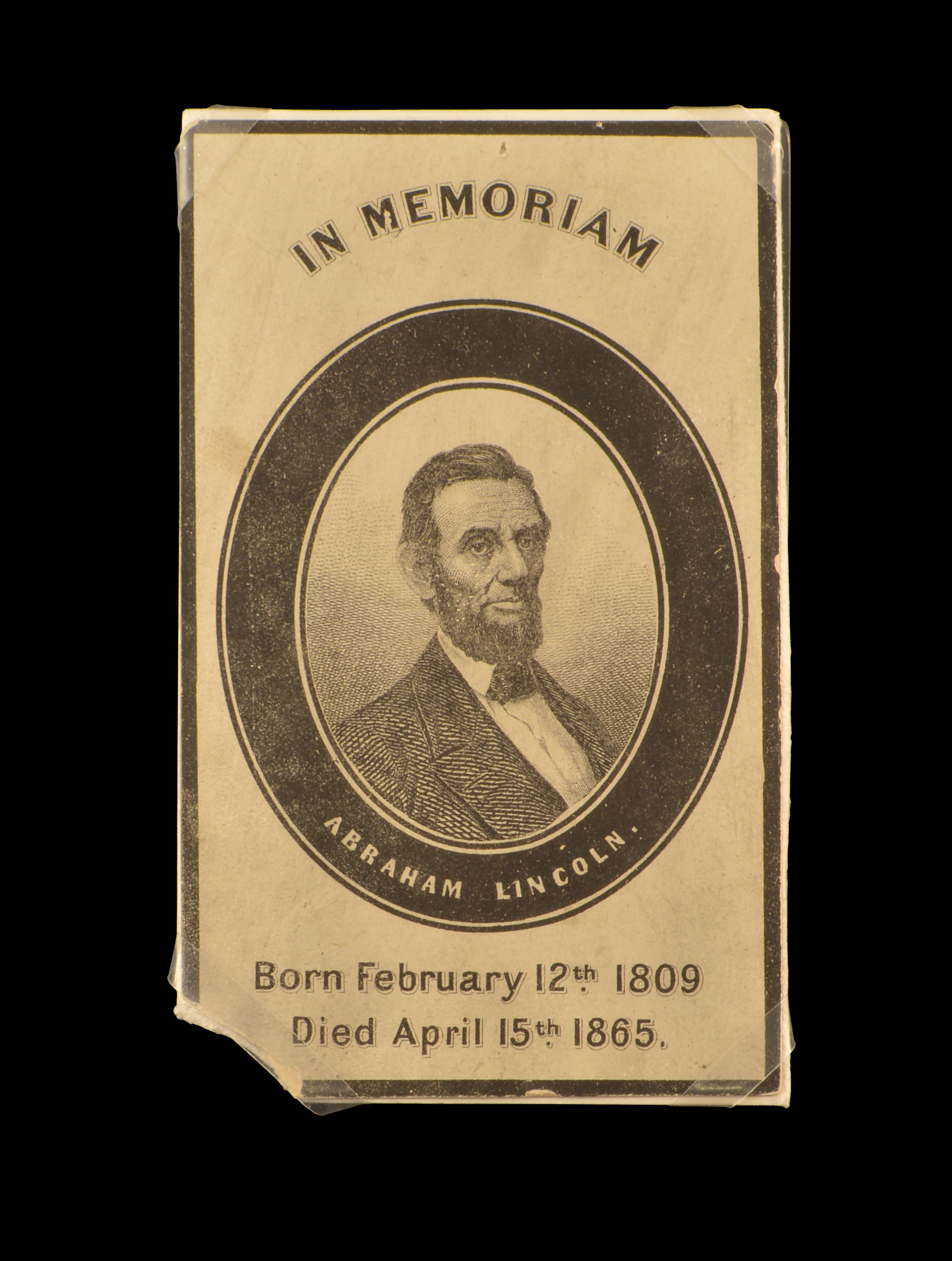
-
Description
President Andrew Johnson declared June 1, 1865, to be a “national day of fasting and prayer.” People all over the country collected mourning cards like this one as a way to take part in the observances.
-
Source
-
Rights
This item is in the public domain and may be reproduced and used for any purpose, including research, teaching, private study, publication, broadcast or commercial use, with proper citation and attribution.
-
Creator
unknown
-
Date
May 1, 1865
from May. 1, 1865
City Inspector's Office Certificate
-
Full Title
City Inspector's Office Certificate
-
Description
This card grants permission to the state of New York to move Lincoln’s body to Springfield, Illinois for interment. The card notes that Lincoln died of a “pistol shot wound.”
-
Transcription
City Inspector’s Office.
New - York, April 21 1805
Permission is hereby given to Peter Relyea
to remove the remains of Abraham Lincoln
Died of pistol shot wound
Now in the city
Springfield Ill for Interment.
H.J. A. Bools
City inspector
RY Bailey Van Clerks
[Transcription Team: Zoe W., Addi S., Brianna J.]
[New Hampton Middle School]
-
Source
-
Rights
This item is in the public domain and may be reproduced and used for any purpose, including research, teaching, private study, publication, broadcast or commercial use, with proper citation and attribution.
-
Tags
-
Cite this Item
unknown. "City Inspector's Office Certificate". Remembering Lincoln. Web. Accessed December 14, 2025. https://rememberinglincoln.fords.org/node/885
-
Creator
unknown
-
Date
1865
from May. 1, 1865
City Inspector's Office Certificate

-
Description
This card grants permission to the state of New York to move Lincoln’s body to Springfield, Illinois for interment. The card notes that Lincoln died of a “pistol shot wound.”
-
Source
-
Rights
This item is in the public domain and may be reproduced and used for any purpose, including research, teaching, private study, publication, broadcast or commercial use, with proper citation and attribution.
-
Creator
unknown
-
Date
May 1, 1865

